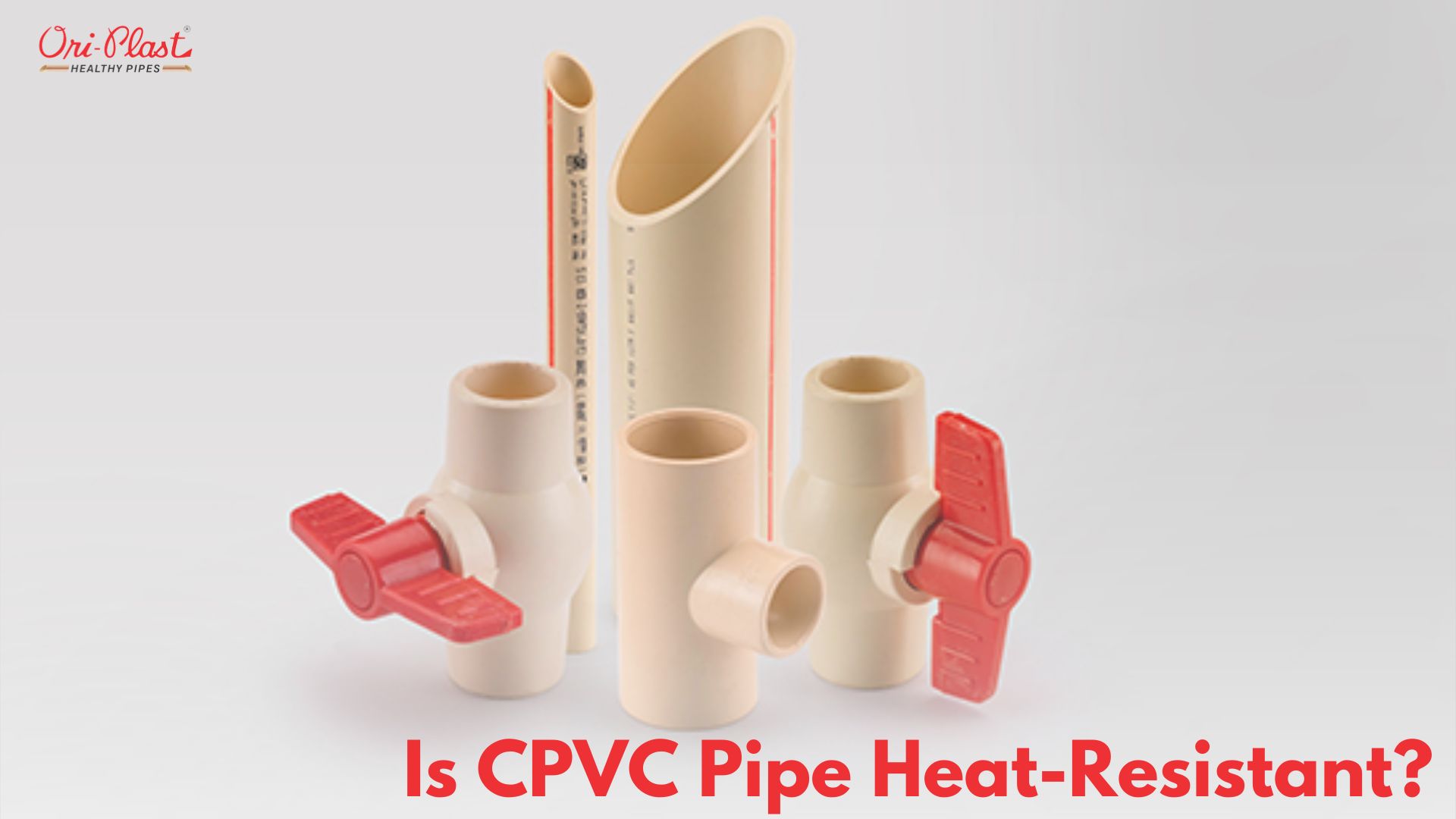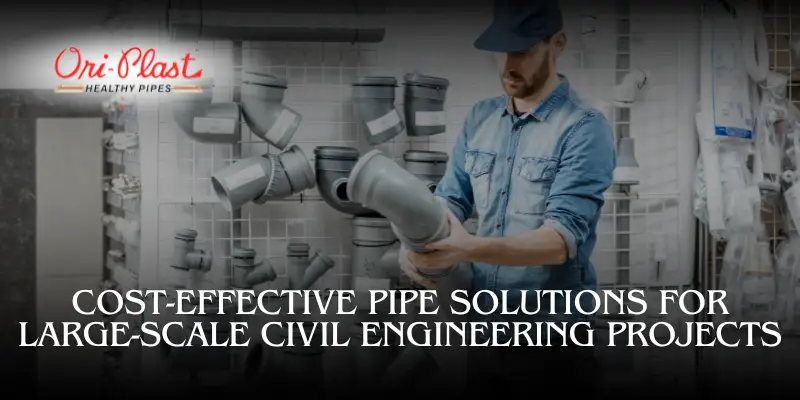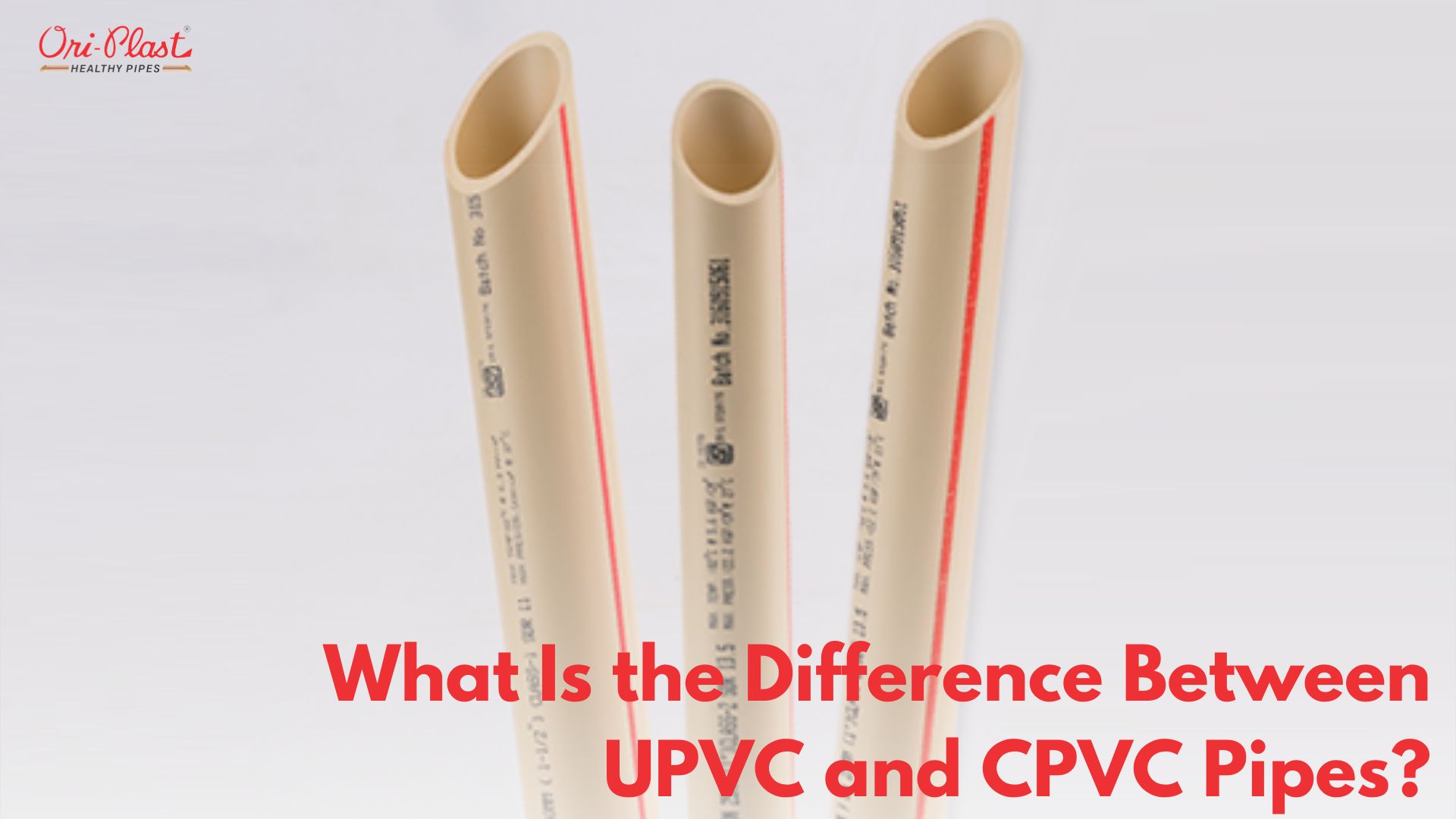CPVC (Chlorinated Polyvinyl Chloride) is widely used in residential, commercial, and industrial plumbing systems. But one of the most common questions people have is: Is CPVC pipe heat-resistant? In this blog, we'll dive deep into understanding the heat resistance of CPVC pipes and why it matters.
What is CPVC Pipe?
CPVC pipe is a thermoplastic material produced by chlorinating polyvinyl chloride (PVC) resin. This chlorination process enhances the material's ability to withstand higher temperatures and makes it more durable and suitable for specific applications. CPVC pipes are commonly used for transporting hot and cold water, as well as in industrial piping systems.
The main reason CPVC is popular is its excellent resistance to heat, chemicals, and corrosion. But how much heat can it handle, and why is it considered a better option in many cases?
Why is Heat Resistance Important for Pipes?
Before diving into CPVC's specific heat resistance, it's essential to understand why heat resistance matters in the first place. Pipes, especially those used in plumbing systems, are often exposed to varying temperatures. When pipes can't handle heat, they may warp, crack, or degrade, leading to costly repairs and water damage.
For example:
- Hot Water Systems: In homes and buildings, hot water pipes can reach temperatures as high as 180°F (82°C). Pipes that aren't heat-resistant will expand or fail, causing leaks.
- Industrial Applications: In industrial settings, where pipes might carry steam or other hot fluids, the ability to withstand high temperatures is crucial for safety and operational efficiency.
The higher the temperature a pipe can handle, the more reliable it is in a wider range of applications.
What is the Heat Resistance of CPVC Pipe?
So, how does CPVC fare when it comes to heat resistance? CPVC pipes are designed to handle temperatures up to 200°F (93°C). This makes it more heat-resistant than many other types of plastic pipes, including traditional PVC.
- Residential Use: For residential hot water systems, which typically operate at temperatures between 140°F and 160°F (60°C to 71°C), CPVC is an ideal choice. It remains stable and doesn't warp or degrade under these conditions.
- Commercial and Industrial Use: In settings where temperatures might occasionally spike above residential levels, CPVC can still hold up well. Its resistance to temperatures up to 200°F makes it reliable for industrial uses such as transporting hot liquids, chemicals, and gases.
When Should You Use CPVC for Heat-Resistant Applications?
Not every piping system needs the level of heat resistance that CPVC provides. However, there are situations where its ability to withstand high temperatures becomes crucial.
Hot Water Distribution in Homes and Buildings
One of the most common uses for CPVC is in hot water distribution systems. Because it can handle temperatures above 180°F, it’s perfect for household and commercial plumbing, where hot water heaters and boilers produce temperatures that could damage other types of plastic piping, like PVC.
Industrial Piping Systems
In industries like manufacturing, food processing, and chemical plants, pipes often carry fluids and gases at elevated temperatures. CPVC is frequently used in these settings because it can handle the demanding conditions without failing. Whether it's steam, hot chemicals, or high-temperature gases, CPVC performs reliably.
Fire Sprinkler Systems
Fire sprinkler systems are another important application for CPVC. In a fire, the pipes may be exposed to very high temperatures, so having heat-resistant piping ensures that the sprinkler system will function correctly during emergencies. CPVC's ability to withstand heat while maintaining structural integrity makes it a common choice in fire suppression systems.
Why is CPVC More Heat-Resistant Than PVC?
Many people wonder: Why is CPVC more heat-resistant than regular PVC?
The key difference lies in the chlorination process. Chlorination gives CPVC additional strength and heat resistance compared to standard PVC. While PVC can only handle temperatures up to 140°F (60°C), CPVC is modified to resist temperatures up to 200°F (93°C). This added durability makes CPVC a better option for high-temperature applications.
What Happens to CPVC at Extreme Temperatures?
While CPVC is heat-resistant, it’s essential to understand its limitations. Like any material, there’s a point where it can start to degrade when exposed to extreme temperatures. Although CPVC can handle temperatures up to 200°F (93°C), prolonged exposure to temperatures higher than this can cause:
- Brittleness: The material may become brittle, increasing the risk of cracks or breaks.
- Distortion: At higher temperatures, CPVC can start to soften and lose its structural integrity.
- Failure: Extreme conditions could lead to the complete failure of the pipe, resulting in leaks or bursts.
In most residential, commercial, and industrial applications, though, these temperatures aren't reached, and CPVC performs effectively.
How Does CPVC Compare to Other Piping Materials?
When considering heat resistance, CPVC isn't the only material to look at. Other piping materials include copper, PEX, and steel. How does CPVC stack up?
- Copper Pipes: Copper is another popular choice for hot water systems because of its excellent heat resistance. It can handle extreme temperatures, but it’s also more expensive and prone to corrosion, especially in aggressive water conditions. CPVC, in contrast, offers a lower-cost, corrosion-resistant alternative.
- PEX Pipes: PEX (cross-linked polyethylene) is another option for plumbing systems. While PEX is flexible and resistant to freezing, its heat resistance is lower than CPVC, typically handling temperatures up to 180°F (82°C).
- Steel Pipes: Steel pipes, particularly stainless steel, are highly durable and can withstand very high temperatures. However, they are heavy, expensive, and prone to rusting over time. CPVC provides a cost-effective alternative with adequate heat resistance for most applications.
Where Should CPVC Not Be Used?
While CPVC excels in many areas, there are certain conditions where it may not be the best choice:
- Extreme Temperatures: If your application consistently exceeds 200°F (93°C), you’ll need to consider materials like steel or copper instead of CPVC.
- Outdoor Exposure: CPVC is not UV-resistant, so it's not ideal for outdoor use unless properly protected from sunlight.
- Aggressive Chemicals: While CPVC resists many chemicals, certain aggressive substances can degrade it over time. Always check the chemical compatibility if using CPVC in an industrial setting.
What Are the Benefits of CPVC Beyond Heat Resistance?
CPVC isn’t just about handling high temperatures; it offers a range of other benefits that make it a top choice for many plumbing and industrial applications:
- Corrosion Resistance: CPVC doesn’t corrode or rust, making it ideal for long-term use in water and chemical systems.
- Low Cost: Compared to copper and steel, CPVC is a more affordable option while still offering excellent performance.
- Easy Installation: CPVC is lightweight and easy to cut and join, reducing labor time and costs.
- Durability: CPVC has a long lifespan, with some systems lasting over 50 years with proper maintenance.
How Can You Maximize CPVC’s Heat-Resistant Capabilities?
To get the most out of CPVC’s heat resistance, ensure that the installation and maintenance are done correctly. Here are some tips:
- Proper Support: CPVC pipes should be adequately supported to prevent sagging or warping over time, especially when exposed to hot water.
- Avoid Direct Flame: When installing, avoid using open flames or excessive heat that could damage the pipe.
- Use Compatible Fittings: Always use CPVC-compatible fittings and solvent cement to ensure a tight and long-lasting seal..
Conclusion: Is CPVC Pipe Heat-Resistant?
Yes, CPVC pipes are heat-resistant and can handle temperatures up to 200°F (93°C). This makes them suitable for various applications, from residential hot water systems to industrial piping. With its balance of affordability, durability, and ease of installation, CPVC is a fantastic choice for anyone needing heat-resistant piping solutions. However, it's essential to use it within its temperature limits to prevent degradation and ensure long-term performance.




